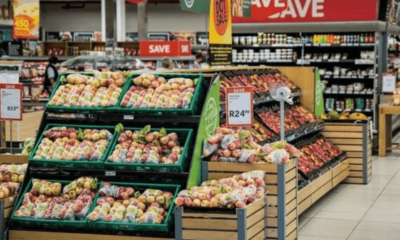Business
Rena Monrovia when you transport something by car
Published
1 month agoon
By
Admin
Transporting goods or personal belongings by car is an integral part of daily life, whether for moving house, delivering items for a business, or simply running errands. The process involves careful planning, organization, and consideration of various factors to ensure that the transportation is efficient, safe, and cost-effective. This guide will delve into the intricacies of transporting items by car, providing detailed insights and tips to help you navigate this task successfully.
Understanding the Basics of Car Transport
Transporting items by car requires a fundamental understanding of the vehicle’s capacity, the nature of the items being transported, and the route to be taken. The car’s capacity, including both weight and volume limits, is crucial. Overloading a car can lead to mechanical issues, reduced fuel efficiency, and safety hazards. It is essential to check the vehicle’s manual for its maximum load capacity and ensure that the items do not exceed this limit.
Planning and Preparation
Effective planning is the cornerstone of successful transportation. Start by making a list of the items to be transported. Categorize them based on size, weight, and fragility. This categorization will help in determining the packing materials needed and the order in which the items should be loaded into the car.
Packing Materials
Investing in appropriate packing materials is vital to protect your items during transit. Common packing materials include:
- Boxes: Various sizes to accommodate different items.
- Bubble Wrap: For fragile items that need cushioning.
- Packing Paper: To wrap items and fill gaps in boxes.
- Tape: Strong packing tape to seal boxes securely.
- Blankets and Straps: To cover large items and secure them in place within the car.
Loading the Car
Loading the car efficiently can make a significant difference in how well your items are protected and how easy the unloading process will be.
- Heaviest Items First: Place the heaviest items at the bottom and near the center of the car. This distribution helps maintain the car’s balance and reduces the risk of toppling.
- Distribute Weight Evenly: Ensure that the weight is evenly distributed to prevent the car from becoming unstable.
- Fragile Items on Top: Items that are fragile should be placed on top and should be secured with straps or placed in well-cushioned areas.
- Utilize All Space: Make use of all available space, including under seats and in footwells, for smaller items. However, ensure that the driver’s view is not obstructed and that there is no interference with the car’s controls.
Securing the Load
Once the items are loaded, it’s crucial to secure them to prevent movement during transit. Movement can not only damage the items but also affect the handling of the car, posing safety risks.
- Straps and Bungee Cords: Use these to tie down larger items.
- Nets and Partitions: These can help keep items in place, especially in SUVs and hatchbacks.
- Blankets: Cover large items with blankets to prevent scratches and provide extra cushioning.
Safety Considerations
Transporting items by car requires adhering to safety regulations to ensure a smooth and hazard-free journey.
- Visibility: Make sure that your view through all mirrors is unobstructed.
- Weight Limits: Do not exceed the car’s recommended weight limit.
- Driving Adjustments: Drive more cautiously. Increased weight affects braking distance and handling.
- Regular Checks: If you are traveling long distances, periodically check the load to ensure that nothing has shifted.
Legal Requirements
Different regions may have specific legal requirements concerning the transportation of goods by car. These may include:
- Load Security Laws: Regulations on how loads should be secured.
- Weight Restrictions: Limits on the weight that can be transported without special permits.
- Item Restrictions: Certain items, such as hazardous materials, may have restrictions or require special handling.
Environmental Considerations
Transporting items by car has an environmental impact, primarily due to fuel consumption. To minimize this impact:
- Fuel Efficiency: Maintain your car to ensure it is as fuel-efficient as possible.
- Reduce Trips: Combine trips to reduce the number of journeys made.
- Carpool: If possible, share transportation duties with others to maximize the use of the vehicle.
Insurance and Liability
Ensure that you are covered for the items being transported. Check with your insurance provider to see if your policy covers the transportation of goods, especially if they are valuable or if you are transporting items for a business. In some cases, additional insurance may be required.
Special Considerations for Business Transport
For businesses, transporting goods by car involves additional considerations:
- Logistics Planning: Efficient route planning to minimize fuel consumption and time.
- Customer Expectations: Ensuring timely and safe delivery to maintain customer satisfaction.
- Legal Compliance: Adhering to commercial transportation regulations, which might be stricter than personal transportation laws.
Conclusion
Transporting items by car can be a straightforward task if approached with careful planning and consideration. By understanding your vehicle’s capacity, using appropriate packing materials, securing the load effectively, and adhering to safety and legal requirements, you can ensure a smooth and efficient transportation process. Whether you are moving house, delivering goods for a business, or simply running errands, these principles will help you achieve your transportation goals with minimal hassle and maximum efficiency.
Transporting items by car might seem like a mundane task, but it requires attention to detail and careful planning to do it effectively and safely. By taking the time to plan and prepare properly, you can ensure that your items arrive at their destination in perfect condition, and you can avoid the potential pitfalls that can arise during transit.
You may like

Immediate Charge: Revolutionizing Real-Time Investment Trading

5 Signs You Need to Adjust the Targeting of Facebook Ad Campaigns

The Hidden Costs and Risks of DIY Cleaning

The Intriguing World of Private Investigators: Uncovering Hidden Truths

Navigating the World of Property Investments: 5 Key Factors for Success

The Impact of Transparent Banking on Cannabis Market Predictability

The Importance of Precision: Achieving Accuracy in Plastic Injection Molding

Navigating Bankruptcy: 10 Pitfalls to Steer Clear Of

Top 10 Overlapping Skills for Security Guards and Criminal Lawyers

Understanding the Different Types of Senior Homecare Services

Comprehensive Guide to Roofing Takeoff Services, Piping Estimating Services, and Drywall Takeoff Services

Maximizing Efficiency and Accuracy with Construction Takeoff and Estimating Services

Cape Cod Home Additions: Enhancing Your Seaside Living

Unlock Your Potential with Pedro Vaz Paulo Coaching

Los Angeles News and Events

Metal Gear Solid 3 Remake: Everything We Know So Far

12 traditional dances from around the world

Pedrovazpaulo Executive Coaching

Drew Brees Makes His NBC Debut: The Internet Amazed by His New Hair

Streamlining Construction Projects with Mechanical Estimating and MEP Takeoff Services

Immediate Charge: Revolutionizing Real-Time Investment Trading

5 Signs You Need to Adjust the Targeting of Facebook Ad Campaigns

The Hidden Costs and Risks of DIY Cleaning

The Intriguing World of Private Investigators: Uncovering Hidden Truths

Navigating the World of Property Investments: 5 Key Factors for Success

The Impact of Transparent Banking on Cannabis Market Predictability

The Importance of Precision: Achieving Accuracy in Plastic Injection Molding

Navigating Bankruptcy: 10 Pitfalls to Steer Clear Of

Top 10 Overlapping Skills for Security Guards and Criminal Lawyers








